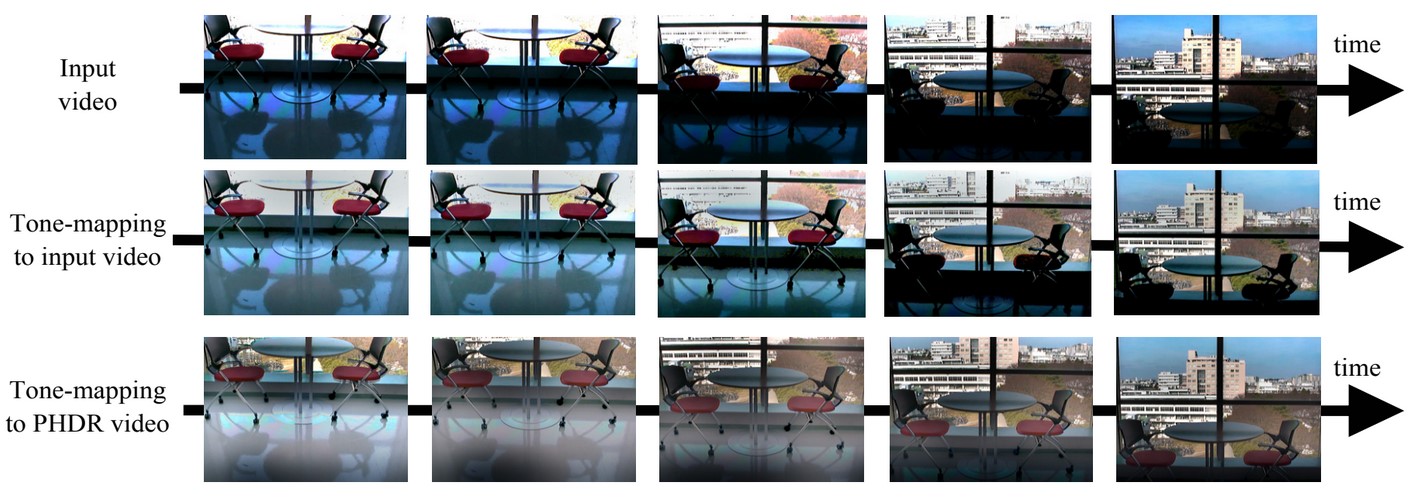“Photometric HDR video for visual adaptation models” by Hirai, Nakaguchi, Tsumura and Miyake
Conference:
Type(s):
Title:
- Photometric HDR video for visual adaptation models
Presenter(s)/Author(s):
Abstract:
Recently it has become possible to watch video images on a variety of display devices, such as LCDs, PDPs, projectors, mobile phones, and so on, in various environments such as in dark rooms, outdoors, etc. When the same video sequences are displayed in different environments, their appearance differs due to the characteristics of human vision. For accurate reproduction of the appearance in different situations, it is very important to apply tone mapping operators (TMOs) based on visual adaptation models to captured video sequences. However, when applying TMOs to videos taken by a camera, the fine tone and color details cannot be reproduced due to the limited dynamic range of the camera. Moreover visual adaptation models require absolute luminance (measured in units of cd/m2 ) to determine their parameters. In this study, in order to apply TMOs to video images, we propose a method for generating photometric high dynamic range (PHDR) videos which have the information of high dynamic range tone and absolute luminance.
References:
1. APEX. http://doug.kerr.home.att.net/pumpkin/
2. P. Sand, and S. Teller, “Video matching,” ACM Transactions on Graphics, Vol. 2, Issue 3, pp. 592–599, 2004 (Proc. SIGGRAPH 2004).
3. M. D. Fairchild, and G. M. Johnson, “Image appearance model,” Proc. IS&T/SPIE 15th Annual Symposium on Electronic Imaging, Vol. 5007, pp.149–160, Santa Clara, Jan. 2003.





